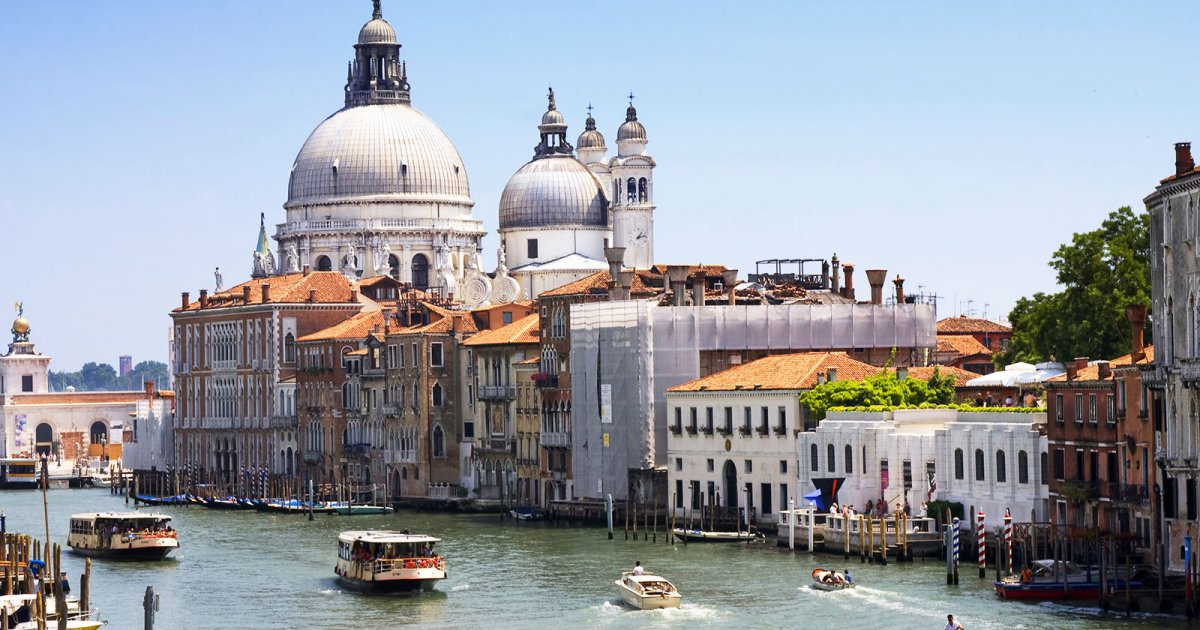GRAND CANAL, History
 Language: English / USA
Language: English / USA
The Grand Canal is about four kilometers long. You can enjoy watching spectacular historic races on it, and it is crossed by such a large amount of boats that restrictions have been introduced to reduce the impact of the waves caused by engines. The Grand Canal divides the center of Venice into two parts, has the shape of a large capital "S", and has a width varying between 30 and 70 meters. It is crossed by three bridges: Scalzi, Rialto, and Accademia.
The succession of noble and ancient private buildings along the Grand Canal is unequaled in any other city in the world: in past centuries travelers noticed with amazement that Venice had many more palaces than any other capital. The parade of palaces along the Grand Canal reflects the splendor of the Venetian ruling class, which was made up of large, branched out families, often connected by complex wedlocks. The lack of a royal palace and court, which were replaced by republican institutions, didn't prevent the flourishing of aristocratic families that participated in the High Council and periodically had one of their family members reach the summit of power with a life-time assignment as Doge.
Each palace of the canal has its own history that is tied to the people who have inhabited it. From the more ancient Byzantine buildings to the "stylistic" remembrances, the banks of the Grand Canal are an anthology of architectural models, where Gothic and Classic styles dominate. All of the façades, however, are united by an impressive number of windows, balconies, and perforated loggias that lighten their construction and enhance their scenic effect.
I will tell you about the buildings you'll see along the Grand Canal one by one, starting from the train station and proceeding towards St. Mark's. The Venice train station, where the vaporetto landings are also located, is called Saint Lucia in memory of the church that was demolished to make way for the tracks.
FUN FACT: before setting off, if you look at the other side of the canal, you'll see a portico with four columns and the green dome of the church of San Simeone Piccolo, an elegant Neoclassical building of the first half of the 1700s. Legend has it that when Napoleon saw it, he exclaimed, "I've seen many churches without a dome, but I've never seen a dome without a church below it!".



